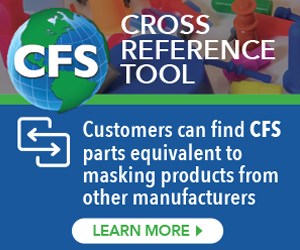Supreme Court Asked to Bring Clarity to the Murky Scope of Federal Jurisdiction over “Waters of the U.S.”
With all the regulatory changes over the past decade, there is a significant amount of confusion of what constitutes a water of the U.S. that is subject to jurisdiction under the Clean Water Act (CWA) and the Supreme Court review could provide some much-needed clarity.
The Supreme Court has agreed to hear the case of whether the U.S. Court of Appeals for the 9th Circuit set forth the proper test for determining whether wetlands are “waters of the United States” (WOTUS) under the Clean Water Act (CWA). In reviewing the test that EPA and the Army Corps of Engineers use to define the scope of the CWA, the Court could bring clarity to the definition of WOTUS and impact whether the new proposed WOTUS rule from the Biden Administration is within the confines of the CWA.
In the key previous Supreme Court ruling on this matter, Rapanos v. United States, the Court held that the CWA does not regulate all wetlands, but a majority of the justices at the time were unable to reach agreement on how to draw those limits. Four of the justices
said the CWA extends only to waters that are "relatively permanent, standing or continuously flowing" or to wetlands that are immediately adjacent to such waters.
One other justice agreed that the CWA does not regulate all wetlands, but offered a different definition of WOTUS, saying federal “jurisdiction over wetlands depends upon the existence of a significant nexus between the wetlands in question and navigable waters in the traditional sense.” Federal courts have been inconsistent in applying either the “permanent, standing or continuously flowing” or “significant nexus” test to determine if a wetland is subject to CWA jurisdiction.
The petitioners in the case now before the Supreme Court, Sackett v. EPA, have argued that the “significant nexus” test applied by the 9th Circuit is no longer controlling law. They have asked the Supreme Court to clarify once and for all the appropriate test that should be applied to define the scope of the law. The Biden Administration and environmental advocate groups are concerned that the Court, with its new conservative majority, will narrow the scope of CWA jurisdiction over WOTUS by dismissing the “significant nexus” test in favor of the “permanent, standing or continuously flowing” test supported by four of the five justices who agreed that the CWA does not regulate all wetlands.
The Obama administration relied heavily on the “significant nexus” approach in crafting its WOTUS definition, while the Trump administration’s WOTUS rule primarily, although not exclusively, on the “permanent, standing or continuously flowing” approach. The Biden administration in withdrawing the Trump-era rule, has proposed an interim definition that interprets WOTUS to mean the waters defined by the “1986 regulations,” and applicable Supreme Court decisions, including Rapanos, which as discussed above is not entirely clear.
EPA and the Corps have indicated that the proposal aims to create a “durable” WOTUS definition, but stakeholders have already expressed diametrically opposed views in public comments. There is no final date for finalizing the proposed interim WOTUS definition and the timing of the rulemaking to set a new permanent definition of WOTUS is also uncertain. Any final action by EPA and the Corps on this issue and clarity on the definition of WOTUS will most likely need to wait until the Supreme Court has issued its decision on which approach for defining WOTUS is controlling law.
A broader industry coalition will continue to work with regulatory officials and allies on this issue and NASF will provide periodic updates to members as new developments emerge. If you have any questions or would like additional information, please contact Jeff Hannapel with NASF at jhannapel@thepolicygroup.com.
This update is courtesy of the National Association for Surface Finishing (NASF). For more information or to become a member, visit nasf.org.
Related Content
Cleaning, Pretreatment to Meet Medical Specs ISO 13485 or FDA 21 CFR820
Maximilian Kessler from SurTec explains new practices for industrial parts cleaning, metal pretreatment and decorative electroplating in the medical device industry.
Read MorePFAS in Surface Finishing: Where is it Going?
Regulation of PFAS chemicals continues to increase — here are some steps finishing operations can take to prepare.
Read MoreCalifornia Looks to Finalize Rule Phasing Out Hexavalent Chromium Plating Processes
California will hold a public hearing January 27, 2023 on its new state rule to phase out hexavalent chromium plating and anodizing.
Read MoreCalifornia Public Hearing to Decide Fate of Hex Chrome Plating and Anodizing
Metal Finishing Association of California urges all members of the metal finishing community to submit comments prior to the hearing.
Read MoreRead Next
The 2024 Ford Mustang: All the Colors Available
Although Chevrolet has announced the end of the Camaro and Dodge is offering “Last Call” editions of the Charger and Challenger, the Ford Mustang is launching to its seventh generation.
Read MorePowder Coating 4.0: Smarter, Faster, More Efficient and Connected
New tools reduce cost and waste, lower manufacturing footprint of powder coating operations.
Read MoreEpisode 42: An Interview with Robin Deal, Hubbard-Hall
Hubbard-Hall wastewater treatment specialist Robin Deal discusses the latest trends in wastewater management.
Read More
























